Introduction
Lean principles have revolutionized the concept of operational excellence, extending far beyond their origins in the automotive industry. This universal paradigm for efficiency and waste reduction has been successfully applied across various sectors, from healthcare to online gaming. By eliminating non-value-adding activities and optimizing processes, companies are achieving heightened efficiency and customer value.
Lean practices offer a compelling solution to businesses seeking increased productivity and cost-effectiveness in today's demanding landscape. In this article, we explore the origins of lean thinking, its core principles, and its transformative outcomes across industries. We also delve into the challenges and solutions involved in implementing lean principles and the benefits they bring, from improved quality and customer satisfaction to faster delivery times and empowered employees.
Embarking on a lean transformation journey requires a comprehensive and methodical approach, aligning the organization's strategy, culture, processes, and systems with the ethos of lean thinking. By embracing lean principles, organizations can drive innovation, adaptability, and success in a fast-paced and ever-evolving business world.
Origins of Lean Thinking
Lean principles, initially cultivated within the Toyota Production System to eradicate waste and optimize customer value, have transcended their automotive origins, evolving into a universal paradigm for operational excellence. By rigorously pinpointing and purging non-value-adding activities—whether it be in the form of superfluous inventory, overproduction, unnecessary waiting times, or defects—companies across various sectors are achieving heightened efficiency. These principles are not industry-specific; they have been effectively applied in healthcare, as seen with the Guthrie Clinic's enterprise analytics team enhancing clinical outcomes and Pacific Steel's strategic overhaul of healthcare costs through meticulous data analysis.
The broader impact of lean methodologies is substantiated by the transformative outcomes witnessed across industries. Consider the significant reduction of waste, which not only streamlines operations but also results in a more agile organizational structure. These lean-driven enhancements are not confined to manufacturing; they extend to service sectors and even to realms as diverse as online gaming.
As businesses face pressing demands for increased efficiency and productivity, the application of lean practices offers a compelling solution. By focusing on value creation and the elimination of waste through a continuous improvement culture, these practices foster greater customer satisfaction and cost-effectiveness. The essence of lean is encapsulated in its core principles: delivering value to customers, streamlining the value stream, and ensuring an uninterrupted flow of products or services.
Reflecting on Toyota's ambitious Woven Planet initiative, which aimed to develop universal software standards for the automotive industry, we learn that visionary projects can encounter hurdles if not properly aligned with concrete goals and timelines. This serves as a cautionary tale for organizations embarking on innovative ventures: the importance of balancing aspirational objectives with pragmatic execution cannot be overstated.
In the realm of digital transformation, the urgency for businesses to adapt is highlighted by a surge in investments in emergent technologies like AI and IoT. The 'Lean into Learning Report of 2023' underscores the necessity for skilling and workforce development to navigate the digital landscape effectively. Similarly, the e-learning market in Latin America demonstrates the vast potential of lean principles applied to educational technology, with a projected market value growth reaching $3 billion by 2023.
In summary, lean principles have proven to be a versatile and impactful approach to business process improvement, with their capacity to enhance operational efficiency and customer value now recognized as a vital tool for success across a multitude of industries.
The Seven Lean Principles
Lean thinking, with its origins in the Toyota Production System, is more than just a cost-cutting exercise. It's a comprehensive philosophy that focuses on delivering value to customers by eliminating waste and optimizing processes. For instance, the Ford Foundation, known for its commitment to social progress, recognized the need to evolve its digital engagement to match its audience growth, leading to the development of a new WordPress plugin to improve accessibility.
Similarly, Rivian, the forward-thinking electric vehicle manufacturer, is applying lean principles to achieve net-zero emissions by 2040, underlining the importance of sustainability in their operations.
These organizations mirror the core tenets of lean thinking, which include understanding the customer's needs deeply and reducing non-value-added activities. This customer-centric approach is exemplified by the Lean pull system and just-in-time manufacturing, which advocate for production based on actual demand rather than forecasts.
Moreover, lean thinking encourages diversification of perspectives to tackle challenges like market drag, inertia, friction between customer expectations and product offerings, and waste stemming from outdated metrics. For example, GE, with its wide-ranging initiatives, emphasizes the significance of taking on formidable challenges and actively delivering solutions, resonating with lean principles of continuous improvement and value creation.
In today's fast-paced and ever-evolving business landscape, lean thinking is not a static set of rules but a dynamic framework for innovation and excellence. It empowers organizations to be agile, responsive to customer needs, and steadfast in their pursuit of removing inefficiencies. The Lean into Learning report of 2023 further showcases the need for organizations to adapt and upskill in the face of digital transformation, underscoring the relevance of lean thinking in cultivating resilient teams and driving holistic workforce transformation.
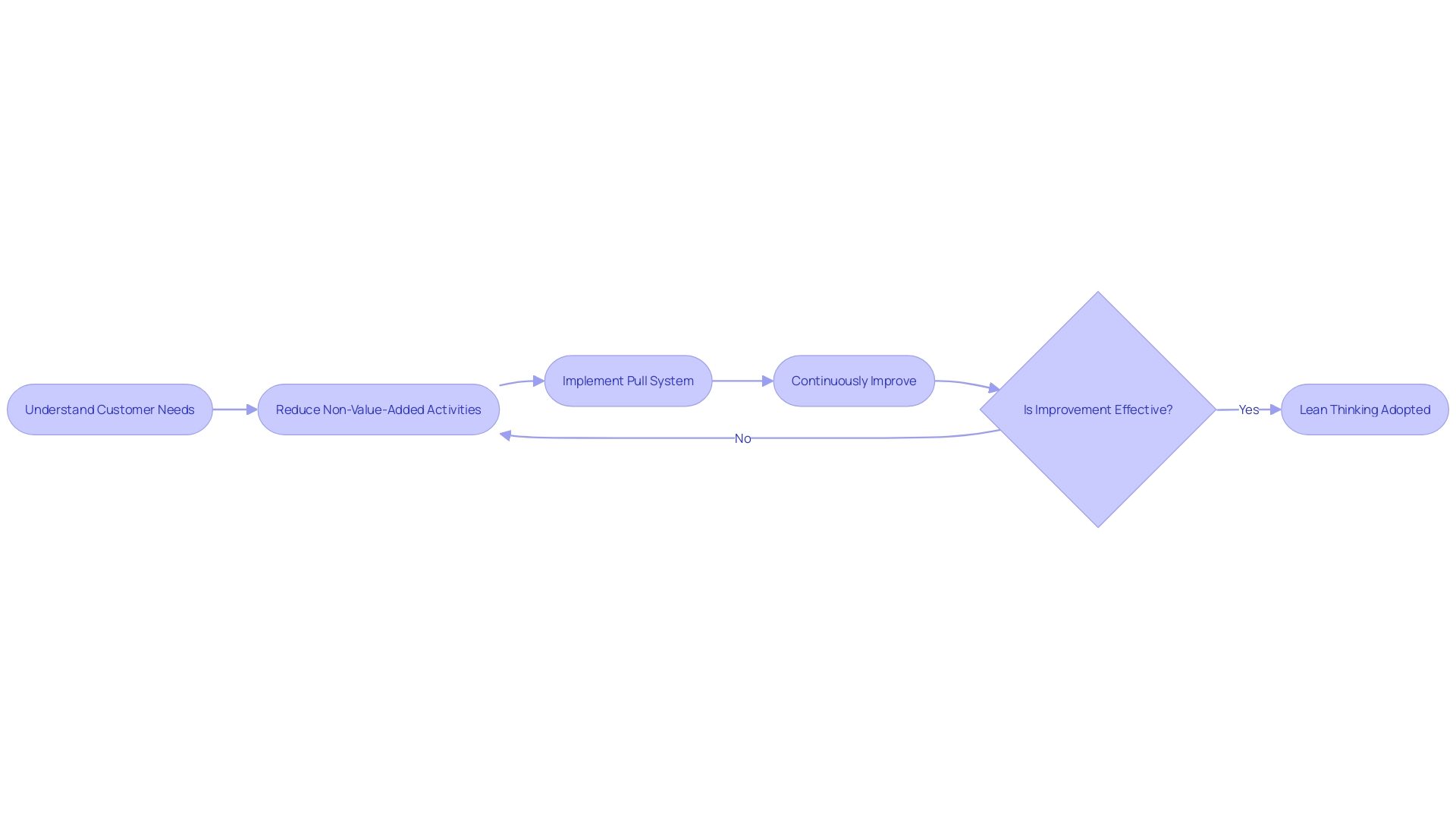
Optimize the Whole
Understanding the profound importance of the first lean principle, automotive manufacturers are now redefining their strategies to optimize the complete value stream instead of isolated processes. In the thick of transitioning to electric vehicles (EVs), the industry faces the crucial task of shifting from profit margins to optimizing free cash flow. Inventory, a significant component of net working capital, becomes a focal point.
Companies like Rivian, pioneering in the EV space, strive to streamline operations globally with sustainability at their core, aiming for net-zero emissions by 2040.
Redesigning vehicles for electric drives presents a golden opportunity to reimagine the value chain. This shift enables a significant inventory reduction, which reverberates through the entire ecosystem, enhancing value delivery from start to finish. It's not just about making vehicles more efficient but also about simplifying product complexity.
For example, by decreasing the number of unique components, the burden on inventory is lessened.
A holistic approach to supply chain network design is also pivotal. Traditionally, network reviews happen every few years or when critical decisions arise. The EV transition demands a more dynamic approach, as it upends internal networks and supplier relationships.
The rise of new value chains and the redesign of products, such as the shift from combustion engines to electric, open doors for structural improvements and strategic decisions.
These organizational transformations underscore the essence of the first lean principle—looking beyond departmental silos to embrace an organization-wide perspective for efficiency and innovation. This systemic viewpoint is essential for fostering cross-functional collaboration and ensuring that the true end goal of value creation is never overshadowed by the pursuit of mere cost reductions.

Eliminate Waste
The pursuit of efficiency is a never-ending quest in business, where every process and activity is scrutinized for its value to the customer. Lean thinking zeros in on this by pinpointing activities that are wasteful and do not contribute to customer satisfaction. These could manifest as redundant steps, overproduction, an abundance of inventory, product defects, or unnecessary waiting times.
To tackle these inefficiencies, lean methodology offers a toolkit to identify and root out these types of waste.
Electric vehicle manufacturer Rivian exemplifies a commitment to this philosophy. They've set an ambitious target of zero net emissions by 2040, which necessitates a relentless focus on sustainability and minimizing waste across all levels of production. Similarly, AT&T's historical legacy revealed that even well-established processes could harbor inefficiencies, as evidenced by their employee frustrations with outdated systems.
This brings to light the importance of reassessing and refining processes continually.
Embracing lean principles, companies can channel their focus on what truly matters to their customers. As lean thinking suggests, it's crucial to engage with and listen to customers to discover their core needs, thus ensuring that every action a company takes is aligned with creating value. This alignment is the essence of the lean pull system and just-in-time manufacturing, which advocate for producing only in response to actual demand, not forecasts.
Moreover, the lean methodology's 5S technique, along with the 3 Ms—muda, mura, and muri—serve as a blueprint for eliminating waste. Identifying and addressing these inefficiencies can significantly enhance productivity. For instance, muda, the Japanese term for futility, is categorized into activities that may be necessary but don't add financial value, and those that don't add value at all.
By focusing on eliminating the latter, organizations can streamline their operations.
In the broader context of global waste management, a scientific report underscores the urgent need for action, presenting strategies that follow the waste hierarchy, which views all waste as potential resources. This principle is integral to lean thinking and can have profound impacts on the environment, society, and the economy when applied at scale.
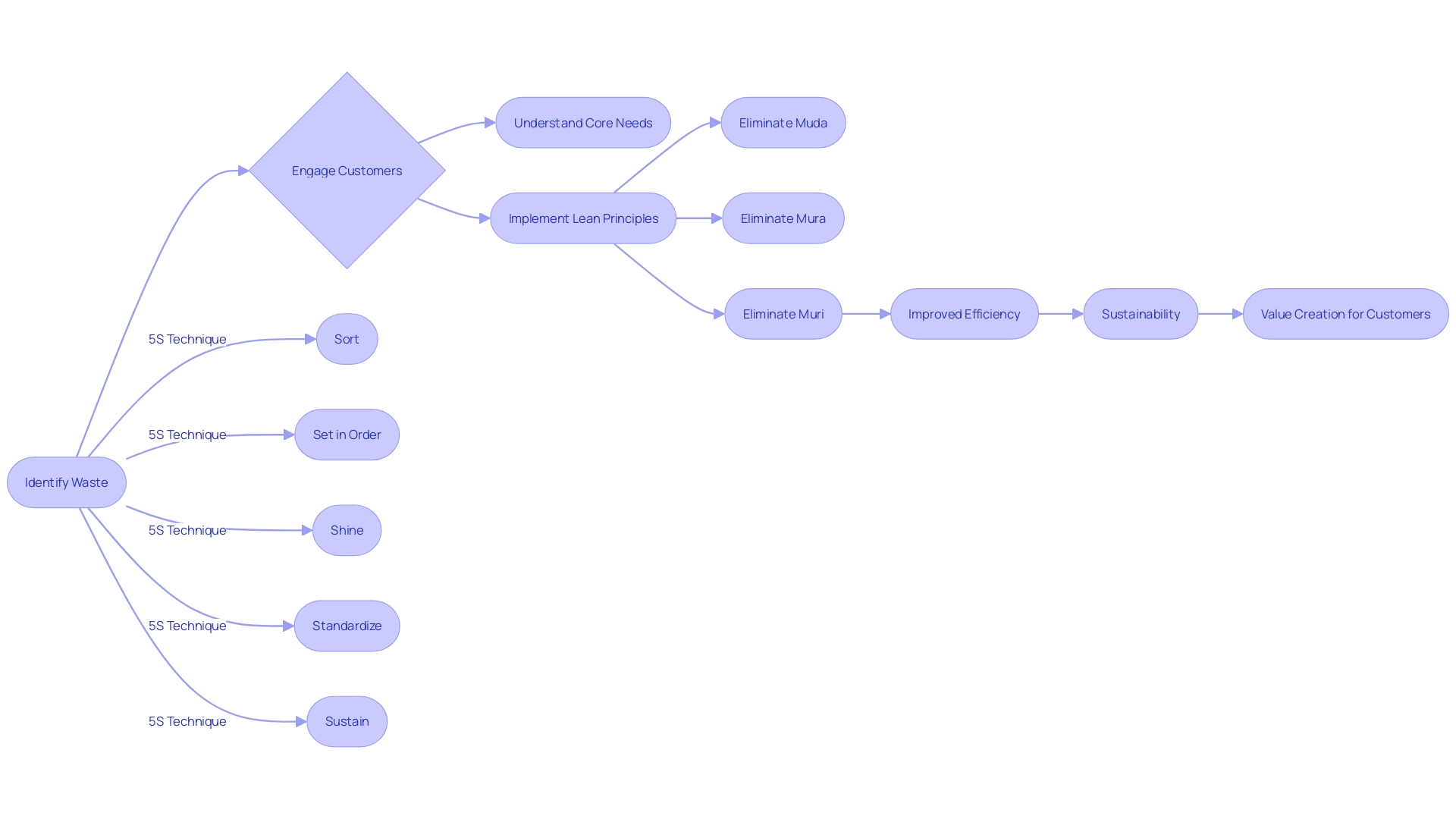
Create Knowledge
Lean organizations thrive on a foundation of continuous learning and improvement, where every employee is galvanized to identify issues, innovate solutions, and share knowledge. This not only taps into the collective intelligence of the workforce, enhancing problem-solving at every level, but also propels the organization towards innovation and operational excellence.
Spotify's culture exemplifies this ethos, recognizing learning as a driver of innovation and employee satisfaction. They identify two forms of learning: structured, formal training and the informal, experiential learning that occurs through peer collaboration and on-the-job challenges, which they term 'applied learning.' This dual approach acknowledges the complexity of learning's impact on performance, which traditional feedback mechanisms may not fully capture.
The Kirkpatrick Model offers a nuanced framework to evaluate training effectiveness, focusing on behavior change and its contribution to organizational goals. However, many companies find it challenging to correlate learning directly with business outcomes, a testament to the intricate nature of learning's influence on performance.
AT&T's experience with legacy systems and the desire for modernization underscores the need for a learning culture that can dismantle longstanding inefficiencies. An employee survey revealed frustration with outdated tools and processes, prompting a call to action for continuous learning as a pathway to innovation.
The Lean into Learning 2023 report underscores the pivotal role of learning in workforce development amidst digital transformation. It emphasizes the need for resilient teams equipped with the right skills, advocating strategies for a comprehensive workforce evolution.
In fostering a learning culture, organizations like McKinsey & Co. are tackling generational challenges head-on. Groups such as the CLO LIFT values group, led by industry leaders like Lisa Christensen, aim to elevate learning standards and collectively address these systemic issues.
Experts like Carol Dweck and K. Anders Ericsson emphasize the importance of a growth mindset and deliberate practice in achieving mastery, suggesting that structured practice and access to mentors are crucial for skill development. Similarly, the experiences of software engineers illustrate how a commitment to fundamentals and continuous learning can break career plateaus.
In conclusion, the commitment to a learning culture is not merely an ideal; it's a strategic imperative for lean organizations seeking to harness innovation, agility, and employee fulfillment. The synthesis of formal and informal learning, backed by deliberate practice and a growth mindset, forms the cornerstone of organizational adaptability and success.
Build Quality In
Incorporating quality into the fabric of an organization's processes is more than a best practice; it's a cornerstone of lean methodology. By proactively embedding quality controls within each stage of the value stream, businesses can significantly diminish the need for end-of-line inspections and corrections. This proactive stance on quality fosters a culture of continuous improvement, where the goal is to preemptively identify and prevent defects, rather than rectifying them post-production.
For example, manufacturers aiming to integrate digital quality measures into their existing framework can start by setting clear, achievable objectives to guide the transformation. They can then carve out a phased roadmap, ensuring that each step builds upon the success of previous digital transitions. This structured approach to incorporating advanced technologies, such as AI, ensures that the new tools are not only aligned with the company's broader objectives but are also tailored to its unique needs.
However, adopting such technologies isn't without its challenges. Resistance to change and a lack of technological proficiency among employees are common hurdles. To navigate these, organizations can deploy Change Management Plans and invest in workforce education, offering self-paced or formal training to enhance digital tool proficiency across the board.
Lean principles also dictate the importance of understanding customer needs to eliminate non-value-added activities. By asking critical questions about personnel, quality standards, and technological equipment, companies can tailor their strategies to boost productivity and efficiency. Moreover, investing in smart tools doesn't necessarily mean the most expensive ones but rather those that optimize operations most effectively.
Maintaining compliance while catering to unique operational stages is another aspect of quality integration. Adopting phase-appropriate quality systems and SOPs ensures compliance with regulatory bodies like the FDA, which now encourages more automated approaches over manual ones. Ensuring that the right experts review processes and documents further solidifies this compliance.
As the industry progresses, it's clear that the integration of quality throughout the manufacturing process is not just a lean principle but a strategic imperative. Even with the best intentions, as seen in Toyota's Woven Planet venture, execution can falter without proper zoning and management discipline. Thus, manufacturers must be vigilant in their pursuit of quality at every juncture, learning from the industry's collective experience to stay ahead.
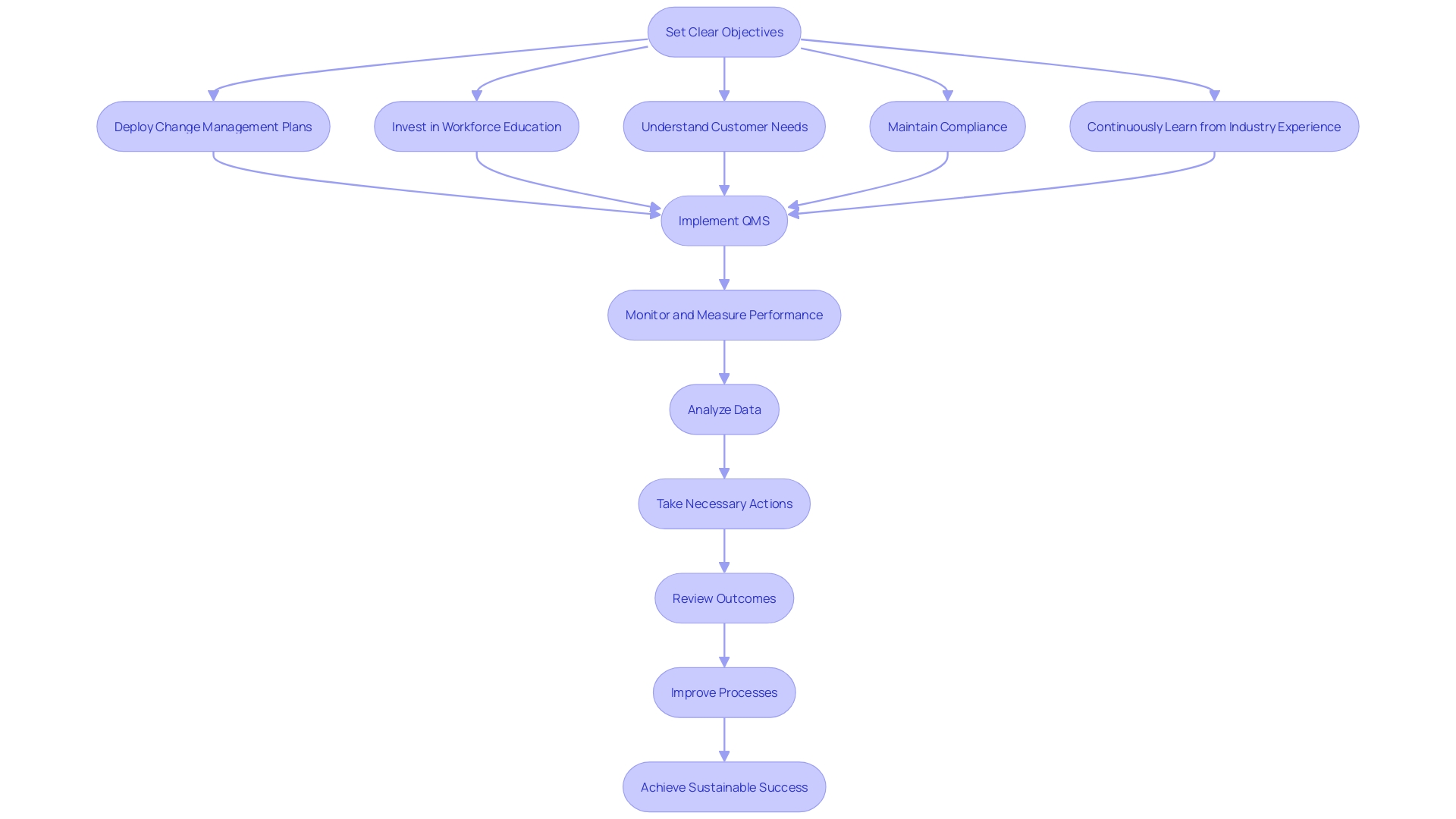
Deliver Fast by Managing Flow
In the pursuit of creating leaner organizations, the focus is often on streamlining the workflow to deliver maximum value with minimal waste. This involves identifying and eliminating process bottlenecks, reducing idle times, and maintaining a seamless flow of work from inception to delivery. By adopting a meticulous approach to managing workflow, organizations can achieve shorter lead times, heightened responsiveness to market demands, and heightened operational efficiency.
Tools such as value stream mapping provide a strategic overview of the process flow and highlight areas for improvement, while kanban systems help regulate the work-in-progress to ensure that each stage of production receives the attention it needs at the right time.
Illustrating the importance of such lean methodologies, Toyota's Woven Planet initiative serves as a cautionary tale. Despite the well-intentioned ambition to create a unified software system for vehicles of varying powertrains, from electric to hydrogen-powered, the project stumbled due to overly aggressive timelines and a disconnect between visionary goals and practical implementation. This underscores the complexity of managing innovation within the constraints of existing production schedules and the necessity of aligning initiatives with a clear and disciplined management strategy.
Moreover, the recent return of Arm Holdings to the public market with a multi-billion dollar valuation speaks volumes about the importance of strategic management in the tech industry. As a linchpin in semiconductor design, Arm's trajectory and influence on the supply chain echo the ripple effects that strategic decisions and management practices can have on the broader industry landscape.
By applying the principles of lean management and understanding the intricacies of flow, organizations can learn from both successful ventures and setbacks. They can optimize their operations in alignment with customer demand and market conditions, thereby ensuring a competitive edge in the fast-paced, ever-evolving business world.
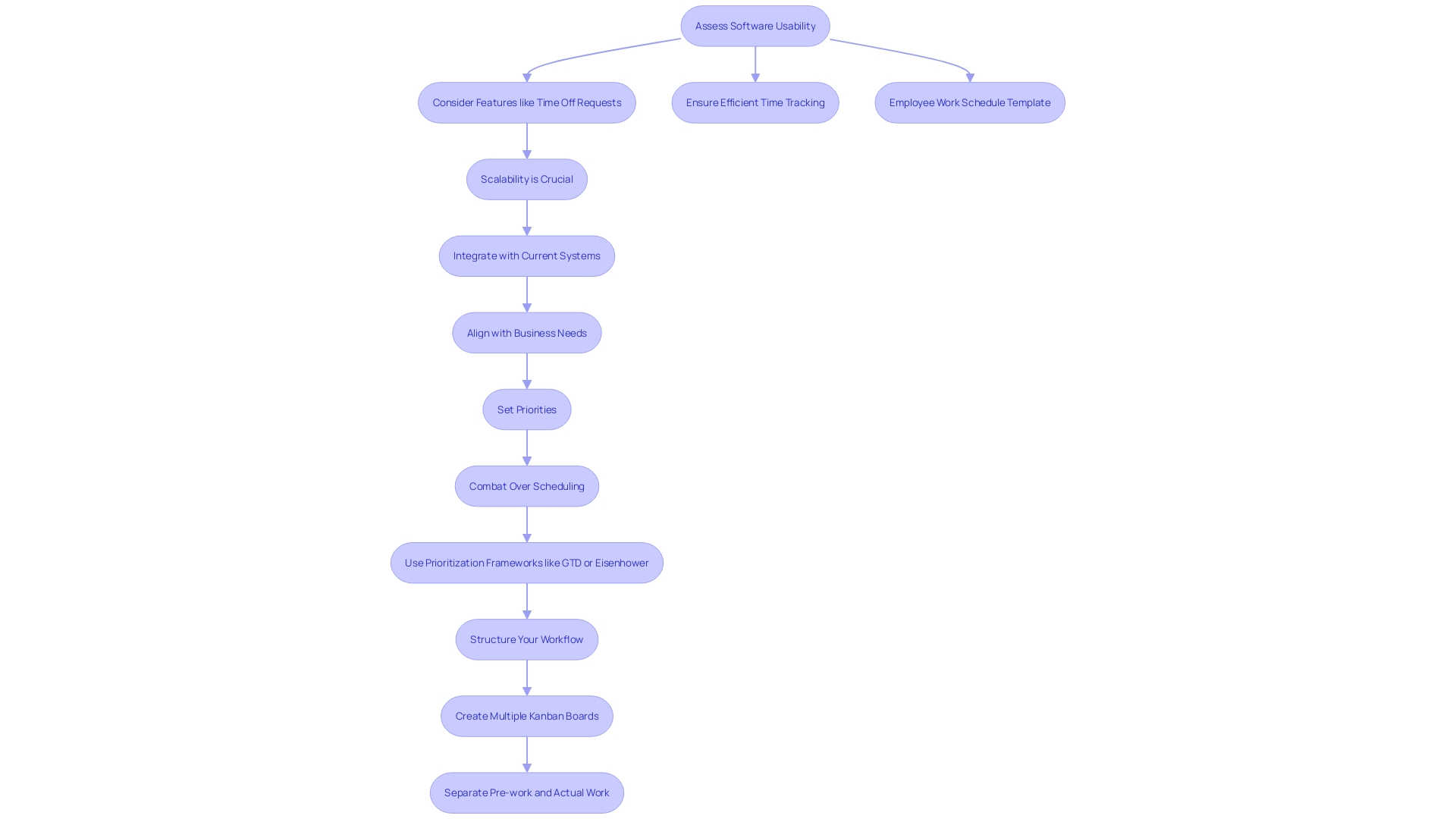
Defer Commitment
Adapting to change and uncertainty in business requires a strategic approach where decisions are made at the most opportune moments. This concept is encapsulated in the practice of deferring commitment, a core principle of lean thinking, which advocates for delaying crucial decisions until a comprehensive information set is available. This strategy fosters flexibility and adaptability, allowing organizations to capitalize on the most current data and insights before locking in a specific course of action.
For example, Toyota's venture with Woven Planet illustrates the risks of premature commitments in an unpredictable business landscape. Despite the company's substantial investment and the clear vision to develop software that could set an industry standard, the project struggled due to the complex execution. As Geoffrey Moore explains, the venture faced issues because it did not adhere to the zone management discipline, which resulted in a mismatch between Toyota's ambitious vision and the practical software developments needed in the short term.
Moreover, the Lean Canvas model, a tool for deconstructing business ideas into fundamental components, also supports the notion of deferring commitment. By facilitating the outline of business models swiftly, it encourages iterative development and timely decision-making based on evolving market feedback.
Businesses are further reminded of the importance of supporting their workforce during times of stress and uncertainty, as financial concerns can significantly impact employee well-being and organizational performance. Thus, maintaining agility in decision-making while being attuned to the needs of the workforce is essential for navigating the complexities of today's business environment.
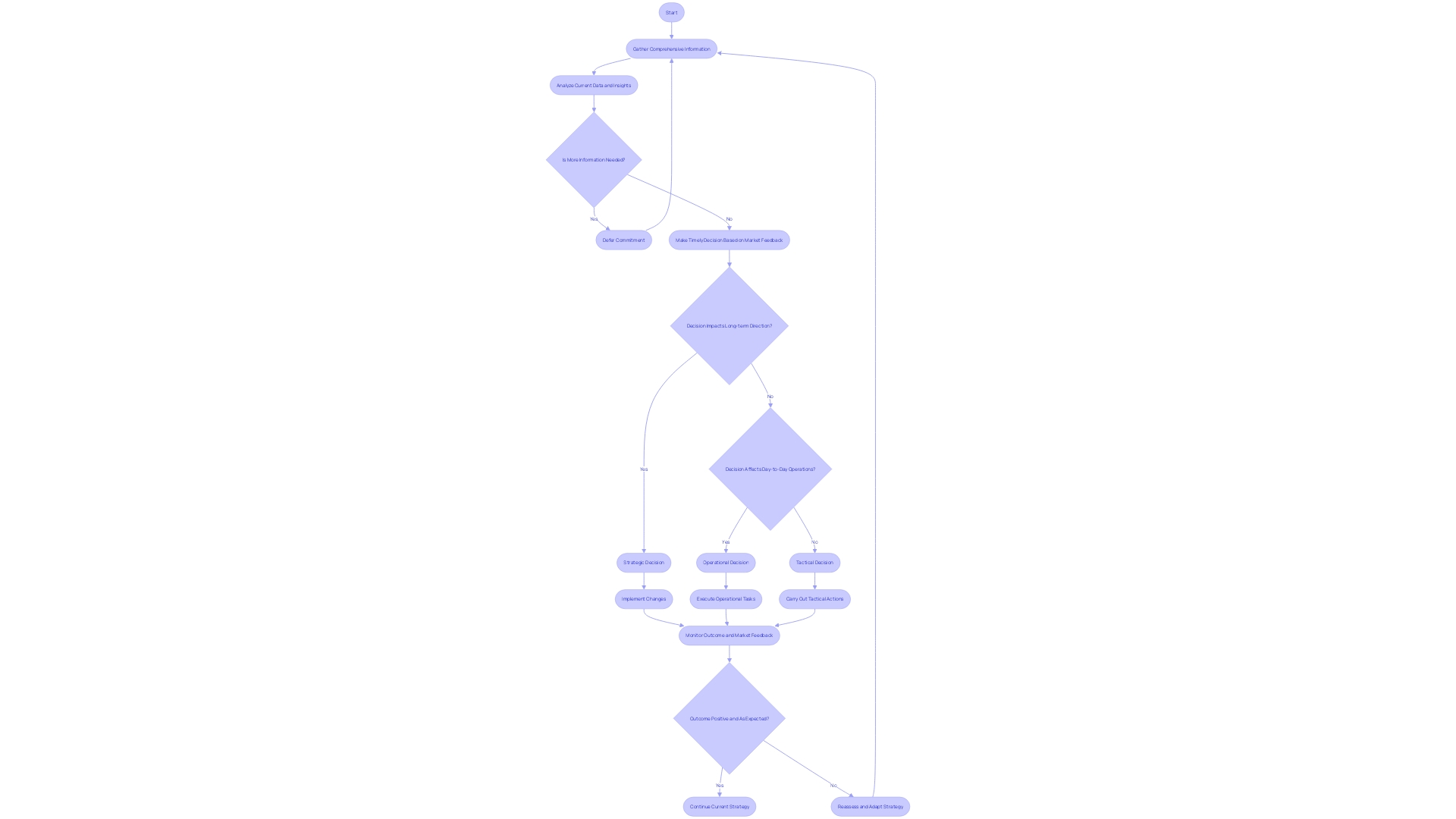
Respect People
Nurturing a workforce that feels valued and capable of making a difference is no small feat. Successful companies understand that their employees are not just workers but also key stakeholders in the organization's journey. For example, digital payment solution provider Nets, with over 50 years of experience, has tackled the challenge of displaying technical data in engaging ways, enabling employees to discover information independently.
They've reimagined their onboarding process, yielding promising early results, demonstrating the impact of involving employees in the evolution of company processes.
Organizations that encourage employee engagement, like Atlassian with its 'ShipIt Days', create a culture where every team member, regardless of role, can innovate and contribute to the company's success. This autonomy and decision-making capability directly contribute to job satisfaction and a sense of purpose among employees. This is supported by a Culture Amp study revealing that globally, approximately 72% of workers are engaged with their jobs, with industries rich in knowledge workers leading the engagement scores.
The importance of a positive work culture and management that genuinely cares for its people cannot be overstated. As Jan De Neve's study shows, employee well-being hinges on how people feel at work and about their work — factors influenced by opportunities for learning, diversity, inclusion, and fair pay. This is further emphasized by the staggering 15 million responses to De Neve's survey, which have shed light on the crucial role of employees' emotions in their overall well-being and the success of an organization.
In times of uncertainty and change, as seen during the 'Great Resignation' of 2021, the value of employee engagement and well-being is even more apparent. Companies that prioritize their people, such as those offering ESOPs, not only foster loyalty and motivation but also enable their employees to share in the prosperity of the business they help to build and grow.
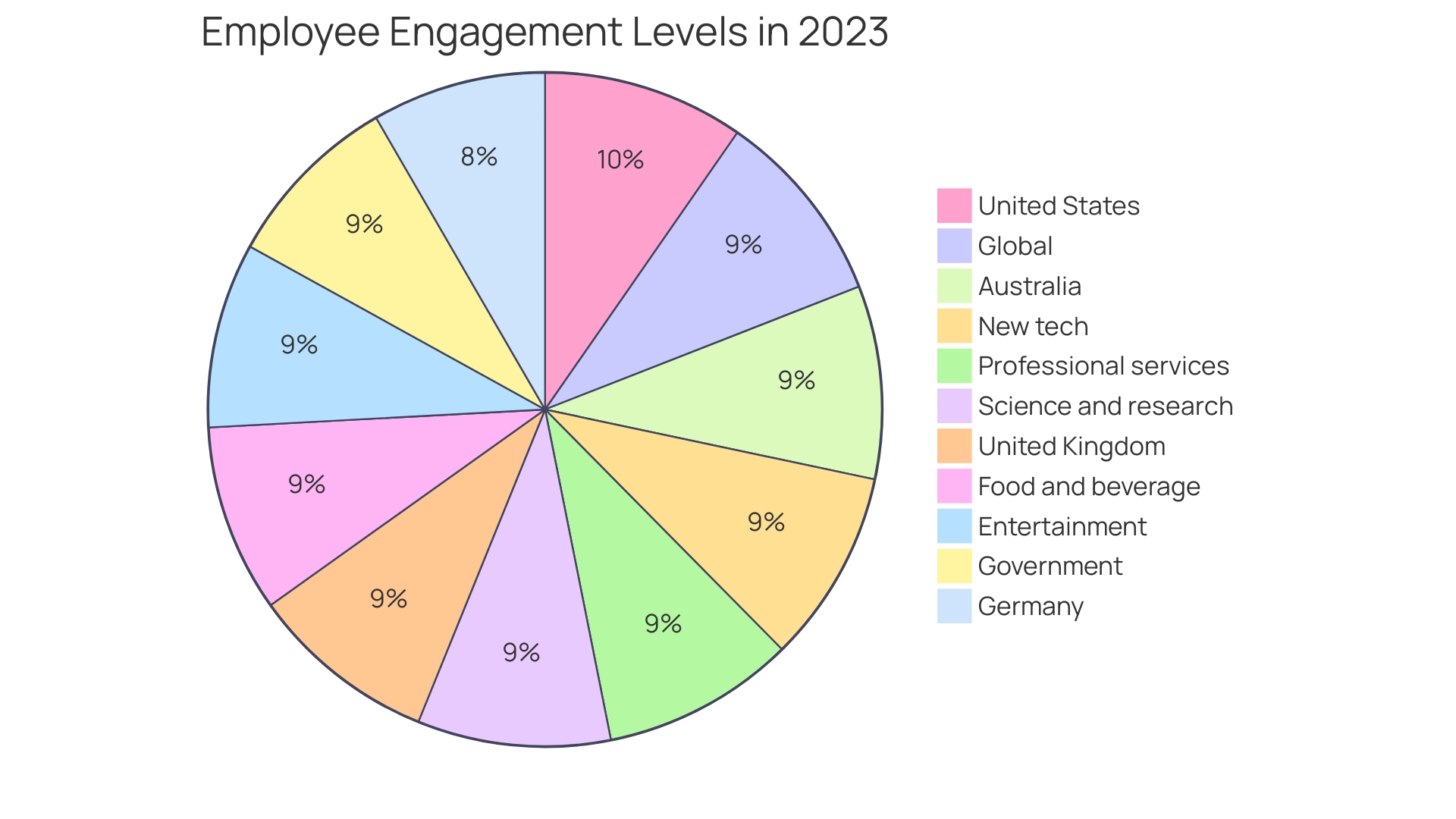
Implementing Lean in Your Organization
Embarking on a lean transformation journey necessitates a comprehensive and methodical approach, one that synchronizes the organization's overarching strategy, culture, processes, and systems with the ethos of lean thinking. It's about cultivating a relentless focus on customer value and a commitment to minimizing waste—a philosophy deeply ingrained in lean product development, as inspired by the Toyota Production System.
To effectively implement lean principles, one must begin with a clear articulation of the purpose and objectives behind adopting lean. This clarity sets the foundation for a successful transition, much like Rivian's strategic goal of achieving net zero emissions by 2040, which focuses on sustainable processes and minimizing waste at every stage.
A thorough assessment of the current state of affairs within the organization is pivotal, akin to Rivian's global operations evaluation and AT&T's introspection triggered by employee feedback. This involves scrutinizing existing processes, systems, and cultural norms to pinpoint areas ripe for improvement.
Crafting a detailed roadmap is the next critical step, laying out specific actions, milestones, and timelines akin to the strategic transformation Paul Keen spearheaded for his company. This plan serves as a guide for the journey ahead, facilitating a smooth transition to lean operations.
Engagement and empowerment of employees across all levels are vital to the lean journey. By providing training and resources, much like the continuous learning and improvement ethos at McKinsey, employees become well-versed in lean principles, contributing to a knowledgeable and skillful workforce.
Starting with small-scale pilot projects allows for testing and refining lean concepts, drawing on insights from these initial forays to enhance the approach continuously. This iterative process echoes the lean philosophy of adapting swiftly to changes and reducing lead times.
Measuring and monitoring progress through established key performance indicators (KPIs) ensures that the impact of lean initiatives is tracked meticulously. This review process should be as regular and analytical as the lean-green practices assessed in the automotive industry, aiming to identify successful strategies and areas needing more attention.
Finally, sustaining and continuously improving upon these lean principles embeds them into the organization's very fabric. It requires fostering a culture of continuous improvement, ensuring that lean thinking becomes an ingrained, ongoing practice. The pursuit of this culture is not unlike the commitment to a lean supply chain management that incorporates economic, social, and environmental sustainability, a commitment that businesses must make to remain competitive in today's marketplace.
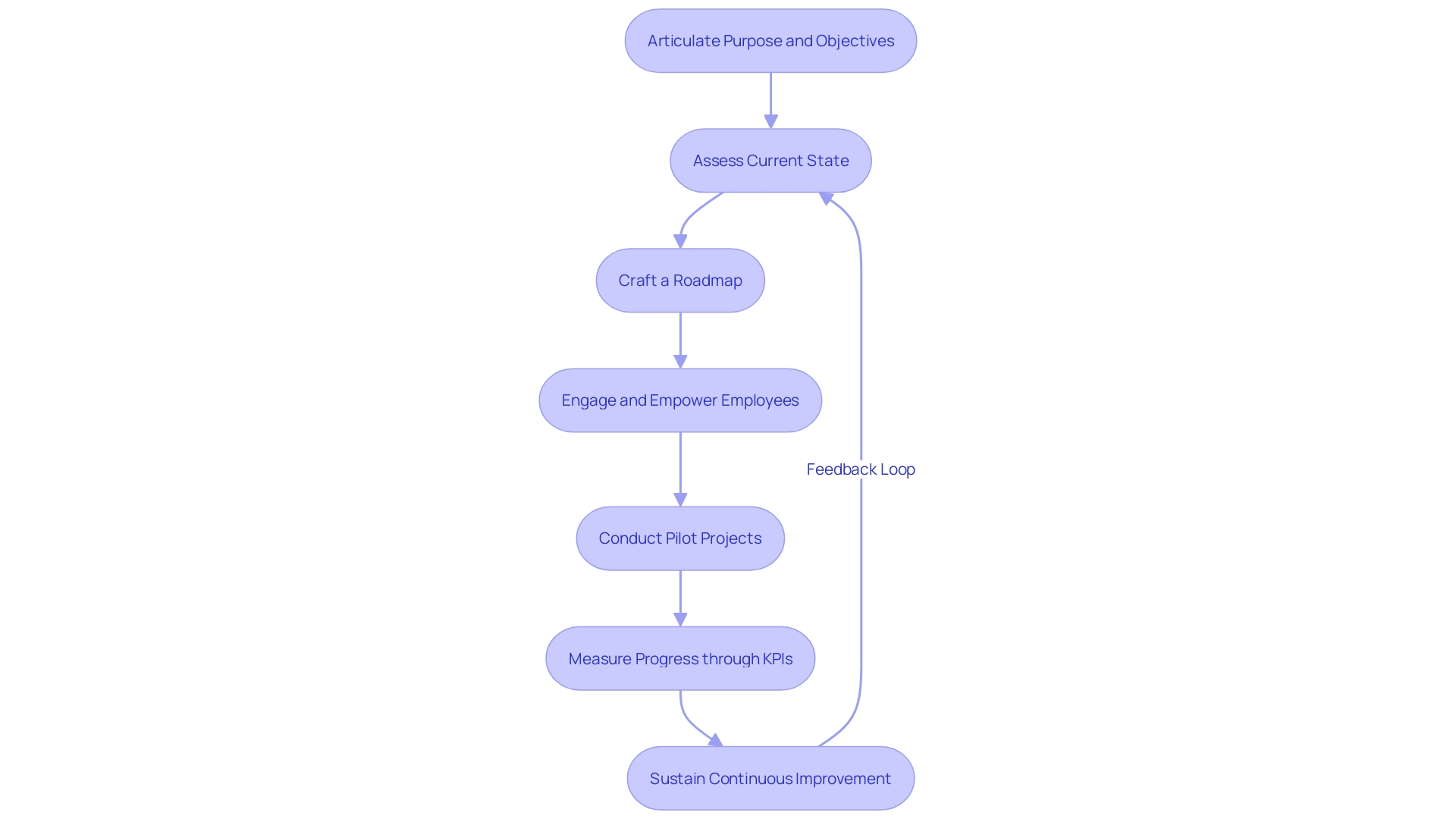
Benefits of Lean Principles
- Embracing lean principles enhances efficiency and productivity, as streamlined processes translate to quicker turnaround times and higher output.
- Organizations that adopt lean strategies typically see a reduction in costs and waste, which bolsters financial performance.
- A focus on quality and customer satisfaction is central to lean methodology, leading to improved products and services.
- Lean practices also contribute to faster delivery times, ensuring that customers receive their products promptly.
- Employee engagement and empowerment are byproducts of lean principles, as team members are encouraged to take initiative and contribute to process improvements.
- Decision-making in lean organizations is data-driven and evidence-based, promoting informed strategies and actions.
- The agility afforded by lean principles provides organizations with a competitive edge, allowing them to swiftly adapt to market changes.

Common Challenges and Solutions
Adopting lean principles can transform an organization's operations, but it's not without its hurdles. Understanding and navigating these challenges is crucial for success.
-
Employee Resistance: Lean implementation often meets resistance due to discomfort with change. Tackling this begins with transparent communication of lean's advantages, engaging team members in the change process, and providing ample training and support. For instance, using tools like the Lean Canvas—popularized by Ash Maurya—can clarify the process for employees by breaking down complex strategies into understandable components, thereby reducing resistance.
-
Leadership Involvement: The absence of leadership commitment can stall lean initiatives. Leaders must not only endorse but actively participate in lean practices and allocate the necessary resources. This commitment mirrors the focus on customer value seen in Lean Product Development, where every team member, especially leaders, must prioritize customer needs.
-
Training and Education: A lack of understanding of lean principles can lead to misapplication. Organizations should invest in robust training programs that are as efficient as creating multiple business models on a Lean Canvas in a single afternoon, ensuring that employees are well-equipped to apply lean methodologies effectively.
-
Sustained Commitment: Lean is not a one-off event but a continuous, iterative process. Organizations must maintain an ongoing commitment to lean principles, striving for a culture of continuous improvement akin to the Six Sigma goal of reducing defects to near-zero levels as revealed by the perfect order rate KPI.
-
Process and System Inefficiencies: Pre-existing inefficiencies can obstruct the adoption of lean principles. Identifying and rectifying these inefficiencies is foundational to building a solid platform for lean, similar to how Toyota aimed to standardize software across its vehicles to streamline operations.
By addressing these challenges head-on and learning from case studies such as Toyota's venture with Woven Planet, organizations can navigate lean implementation more effectively, ensuring they capture the full spectrum of lean benefits—enhanced efficiency, reduced waste, and continuous improvement.
Conclusion
Lean principles have revolutionized operational excellence across sectors, offering a compelling solution for increased productivity and cost-effectiveness. By eliminating non-value-adding activities and optimizing processes, companies achieve efficiency and customer value. Implementing lean principles requires a comprehensive approach, aligning strategy, culture, processes, and systems.
Clear articulation of purpose, assessing the current state, crafting a roadmap, engaging employees, and sustaining a culture of continuous improvement are crucial steps. Lean principles enhance efficiency, reduce costs and waste, improve quality and customer satisfaction, enable faster delivery times, empower employees, and promote data-driven decision-making. Challenges like resistance, lack of leadership involvement, and pre-existing inefficiencies can be overcome through communication, commitment, training, and addressing issues.
Embracing lean thinking and implementing its principles drive innovation, adaptability, and success. The key message is to embark on a comprehensive lean transformation journey, aligning strategy, culture, processes, and systems, to achieve efficiency, waste reduction, and continuous improvement.




